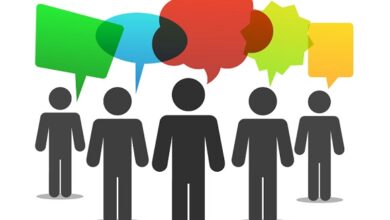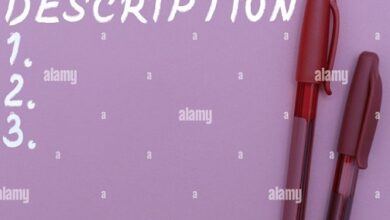The economic process is the set of actions carried out to generate and exchange the means necessary to satisfy the needs of society. These means may or may not be tangible.
In this sense, all people become economic agents, assuming different roles in the market; producer, distributor, seller, buyer, etc.
These functions fulfill different, but not exclusive, functions within the economic process. For example, a producer may buy goods for consumption or use them as raw material for his production.
In each of the stages or phases of the economic process, elements emerge that configure it: money, capital, market, consumption, prices, supply, demand, etc.
The economic process is a daily and constant event that occurs on a small and large scale in all societies in the world, regardless of their level of development.
Stages of the economic process
Due to its procedural nature, the economic process goes through several phases that occur in a cyclical and repetitive way, namely:
1-Production
Production is the phase in which goods and services are generated, planned, elaborated. It is about applying force (human or machine) to transform natural resources into something that will benefit a certain number of people.
It is the basis of the economy, because if there is no good or service to be exchanged, the other phases will not occur.
It is a phase that depends on factors such as:
The land
Land (space) is needed to extract the natural resources needed for production.
Whoever owns it, can receive a remuneration for its use, called rent. The rent can be transferred with the sale of the space.
The capital
It is the name given to resources (monetary or otherwise) available to increase production.
The profit that the owner of this capital receives for its use is called interest.
The work
Work is the effort made for the elaboration or use of tools with the objective of producing a good or service.
The conception of the work generated debate among economic theorists. The remuneration received for doing a job is called work accidents with sick leave, and unpaid leave for personal matters. In the latter case, the firm may cut the employee’s salary.
Company
It is the organization of the other three factors of production under certain parameters (physical or virtual), to generate goods and services on a scale larger than the individual.
In this sense, the employer pays to use the land and labor; and charges for capital investment and the sale of the good or service produced. What the employer receives as compensation is called income.
Note that classical economic theory excludes the firm from factors of production.
2- Circulation and distribution
In circulation, goods and services reach consumers. At this stage, goods and services move to and within markets. Figuratively, circulation is a “bridge” between production and consumption.
In distribution, consumers obtain goods and services and, in return, pay a price defined by supply and demand in the market.
Commercial distribution involves the phases of transport, marketing and placement at points of sale.
These intrinsic phases of distribution are also considered when pricing the good or service and constitute what is known as the distribution chain.
In each link of this chain, intermediaries appear: agents, wholesalers, retailers / sellers and consumers.
3-Consumption
It is the stage in which the goods and services produced are used, consumed and/or enjoyed by the consumer. At this point, society meets its needs and, therefore, is considered the last phase of the production process.
However, it is a circular activity because it is produced to access consumer goods and this consumption generates production. Consumption is also the name given to the part of income that is not saved.
The gross domestic product (GDP) of a nation is largely composed of consumption, considered from the expenditure variable.
Consumption can be:
Private
In a national economy, private consumption is that carried out by private non-profit families and institutions.
Public
It is represented by purchases and expenses incurred by public administrations in the exercise of their functions.
4-Investment
It is the process of taking advantage of income in the generation of capital to return to production or for its own enjoyment. In other words, it’s about financing production.
Example of the economic process of coffee
1-Production
For coffee production, we must start by planting the seeds and managing the harvest. When the beans are ready, we go to harvest, which can be done through two processes: harvesting and pickling.
Then the coffee processing begins. First, the pulp is removed, then it is dried and, finally, curing is carried out, in which the quality of the coffee is determined by tasting.
Roasting is then carried out, in charge of imparting aroma and flavor to the coffee and the earth, so that it can finally be packaged and prepared for distribution.
2- Circulation and distribution
Distribution companies follow protocols to keep the coffee in perfect condition, until it reaches the companies that put it in the window, to reach the final consumer: supermarkets, bars, cafes, gourmet stores, etc.
3-Consumption
This is when coffee is bought or served to the final consumer. It could be when you buy a floor pack at your neighborhood supermarket or when it’s served at the fanciest cafe in town.
4-Investment
In this case, the investment would be for the producer to allocate part of his profits to improve the conditions of his business, whether expanding it, buying machines, hiring new employees or researching new markets.
Other factors of the economic process
Marketplace
It is the physical or virtual space in which the exchange of goods and services takes place. In this area, goods exchanged are called goods.
Price
It is the amount of money or goods you are willing to pay for a good or service.
Value
It is a concept that refers to the cost of manufacturing the goods plus the profit received.
Productivity
It is the amount of product that results from work during a given period of time.
saving
It is the part of profits that is not spent.
Technology
Technology is the way in which production is carried out; all techniques, tools and procedures involved in the process.
supplies
They are all the elements needed to create a product.
economic systems
They are the way societies organize themselves to decide what to produce, how to produce it and how to distribute it.
These decisions end up responding to the social, cultural and political values of these groups.
The most studied and known economic systems are:
- Capitalist
- socialist
- Social market economy




